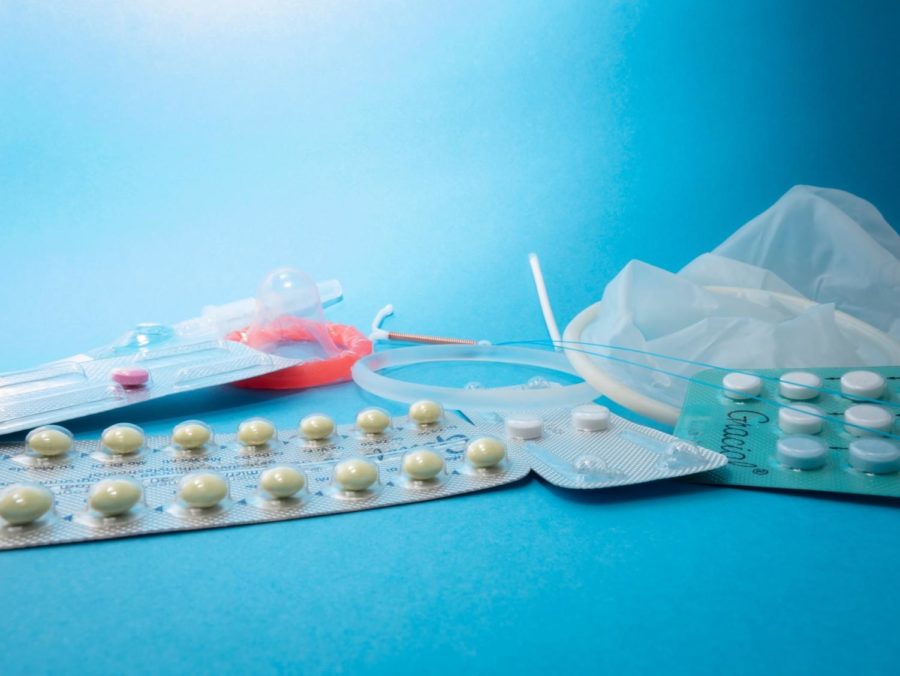A crash course in birth control science
November 3, 2021
Birth control can be a scary subject. Knowing what works best for your body and lifestyle takes a lot of research.
A crash course guide can be useful in determining contraception that is best for you. Always have a conversation with your doctor to know what will work for your body.
When considering your options for birth control, know the risks and advantages that are important to you.
Birth control options can be catered to what you need, so keep an open mind about your options and possibilities.
The Pill – 91% effectiveness
Birth control pills are oral contraceptives taken every day. There are different forms of the pill, being combination or mini pills. Combination birth control pills have subsections in themselves, either conventional, extended or continuous dosing.
Extended or continuous dosing pills prevent menstrual cycles for multiple months or get rid of it entirely. With conventional pills, you will still have a week of menstruating each month. “To be effective, any method of contraception must be used consistently and correctly,” said Mayo Clinic.
The Ring – 99% effectiveness
The ring is effective in preventing pregnancy in the same way as the pill. There are two forms of the Ring: NuvaRing and Annovera. You insert the NuvaRing once a month. It lets out hormones that prevent ovulation and keep you from releasing an egg until removed. Annovera ring lasts for an entire year but is still removed once a month for a regular menstrual cycle.
The Patch – 91% effectiveness
The Patch has two types: the Xulane and Twirla patch. This form is effective in stopping the fertilization of the egg and sperm. It has progestin and estrogen hormones that stop ovulation and thicken the mucus around the cervix, preventing sperm from entering the uterus. The patch can be worn on the back, stomach or arm; the hormones enter your system through the skin.
Planned Parenthood recommends taking the time to check in on your patch daily to see if it is secure, changing it routinely and storing your replacement patches correctly to ensure safety.
The IUD – 99% effectiveness
The Intrauterine Device (IUD) is a T-shaped device that is placed inside the uterus. This form of birth control is put in by a health care professional. The IUD has two types: hormonal or non-hormonal. It lasts anywhere from three to 12 years.
The non-hormonal IUD is made out of copper, which prevents egg fertilization, making it an effective way to prevent pregnancy. The hormonal IUD thickens mucus on the cervix and stops the release of the egg (ovulation) making it one of the most effective forms.
The most common side effects of IUD contraceptives are irregular menstrual cycles, excessive cramping and backaches, according to Bedsider.
The non-hormonal IUD can also be used as an emergency contraceptive if put in within five days of unprotected sex.
The Implant – 99% effectiveness
The implant is a small, thin rod put into your upper, inner arm by a doctor. Mayo Clinic describes it as, “A contraceptive implant is a flexible plastic rod about the size of a matchstick…”
It can be effective for up to five years. The implant can prevent pregnancy in the same ways as an IUD with a hormone called progestin. It is similar in that it thickens the mucus around the cervix to get rid of sperm and prevents ovulation.
The Shot – 94% effectiveness
The “shot,” or the Depo-Provera shot, is an injection received once every three months or four times a year. Either a doctor or nurse can administer the shot otherwise you have the option to take home your supply, but effectiveness comes with consistency.
Always consult your physician on what preferred birth control is for you. Factors like insurance, previous health concerns and lifestyle all impact what birth control you choose. While many of these options help in preventing pregnancy, they do not prevent Sexually Transmitted Diseases (STD).
To learn more about birth control and sexual health visit university resources like Thielan Student Health Center and Iowa State’s Student Wellness for Sexual Health Promotion website.







